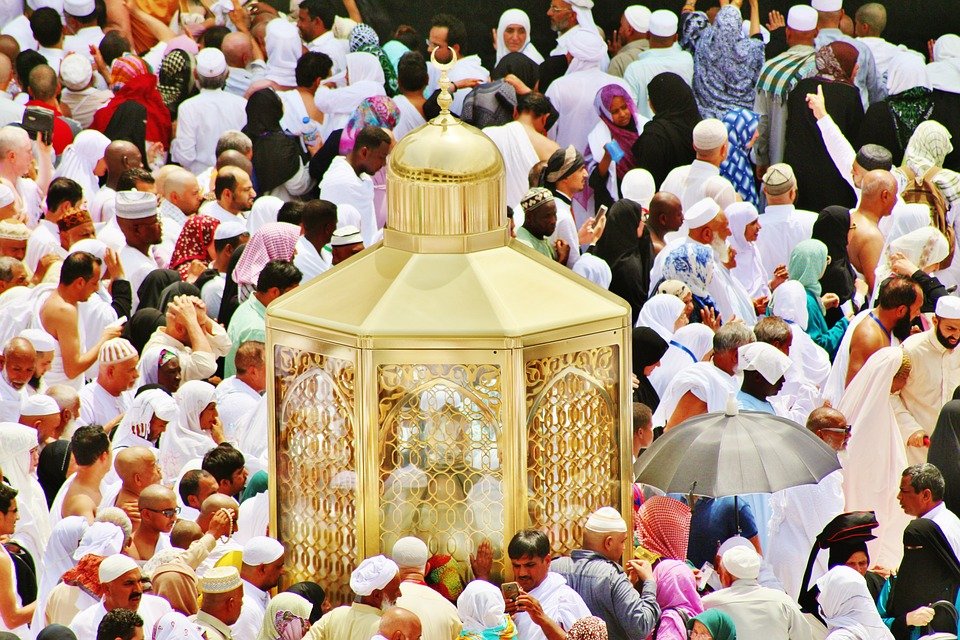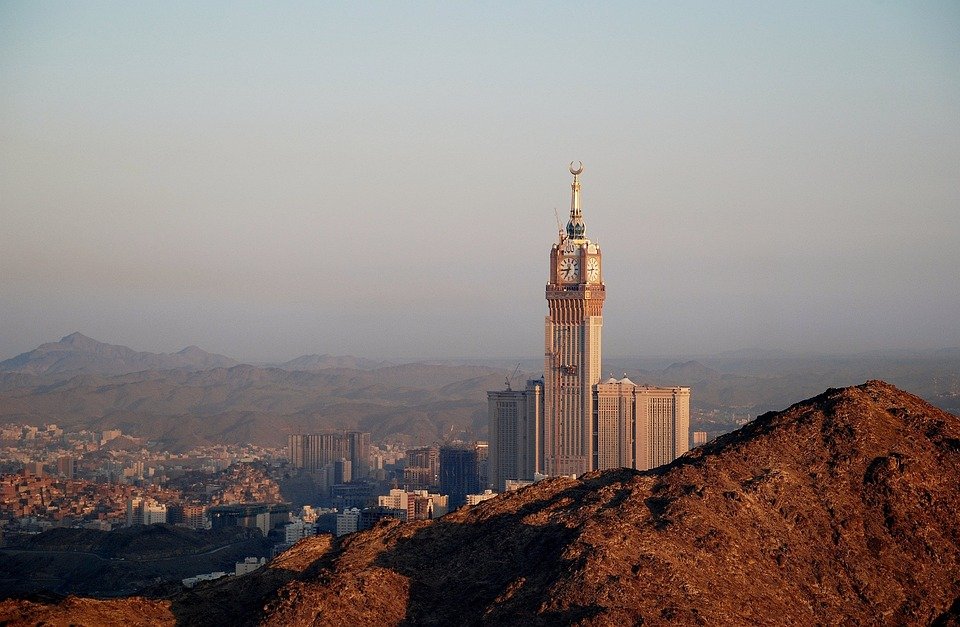You are here to read: How Long Is the Hajj Process? A Step-by-Step Guide – A Thoughtfully Written Guide Offering Spiritual Wisdom and Travel Advice for Every Pilgrim who is going on holy journey of Hajj or Umrah.
When exploring the topic of how long is the Hajj process, many people seek clarity on what to expect. The Hajj pilgrimage is a deeply spiritual experience that lasts about five to six days during the Islamic month of Dhul-Hijjah. In this article, I promise to provide a thorough guide on how long is the Hajj process, complete with all the essential details you need to prepare yourself. From the rituals performed in Mina and Arafat to the acts of worship in the holy city of Makkah, understanding the timeframe will help you experience this significant event in its entirety.
In my opinion, grasping how long is the Hajj process holds immense importance for every pilgrim. It not only helps in planning but also enriches the spiritual experience of the pilgrimage. After nine years in the travel field specializing in Umrah and Makkah and Madinah trips since 2016, we feel confident providing insights into this critical aspect. Our expertise enables us to present you with a comprehensive explanation in “How Long Is the Hajj Process? A Step-by-Step Guide.” We truly believe that understanding the time commitment will enhance your preparation and devotion during this remarkable spiritual occasion.
How Long Is the Hajj Process? A Step-by-Step Guide
Understanding Hajj
Hajj is one of the five pillars in Islam. It’s a mandatory act for Muslims who are financially and physically able. Every year, millions of pilgrims gather in Makkah to perform this sacred pilgrimage. Participating in Hajj brings great spiritual rewards, and it’s a chance to seek forgiveness and peace. Traditionally, the Hajj happens during the Islamic month of Dhu al-Hijjah, and it holds deep significance for every Muslim.
I think many people see Hajj as more than just a religious duty—it’s a time for reflection and community. The experience of praying shoulder-to-shoulder with people from diverse backgrounds creates a unique atmosphere of unity. Pilgrims often feel an immense sense of belonging, realizing that they are part of a global faith. This collective spirit fosters understanding and compassion among individuals who might otherwise never meet.
Preparing for Hajj
Preparation is crucial for a successful Hajj experience. Many Muslims start planning months in advance. Typically, it involves booking flights and accommodations. Pilgrims often choose reliable tour operators to ensure their journey goes smoothly. Researching the rites of Hajj is also essential. Knowing what to expect can help ease any anxiety.
Additionally, spiritual preparation cannot be overlooked. People often engage in extra prayers, Quran readings, and discussions about the significance of Hajj. I believe this phase is vital because it helps pilgrims focus on their intentions. They seek to purify their hearts and minds, aiming for a spiritual awakening. Understanding the rituals and their meanings deepens the overall experience, making every prayer and action all the more significant.
The Duration of Hajj
The Hajj pilgrimage lasts approximately five to six days. However, many pilgrims expand their stay, spending time in Makkah or Madinah. The actual rituals of Hajj begin on the 8th day of Dhu al-Hijjah and continue until the 13th. During this time, pilgrims perform a series of religious rites, each with its own importance.
You're at the middle of this awesome post at AirlinkHajjandUmrah.com through: How Long Is the Hajj Process? A Step-by-Step Guide. Keep reading, it gets better!
Most pilgrims arrive in Makkah a few days before the official start. This allows them to acclimatize to the environment and join prayers at the Grand Mosque. I think this buffer period helps many feel less rushed. It gives people time to connect with others and prepare emotionally for the experience that lies ahead.
Key Rituals During Hajj
Each day of Hajj involves particular rituals that fulfill religious obligations. Starting on the 8th of Dhu al-Hijjah, pilgrims enter a state of Ihram, which is a sacred form of dress and mindset. They then proceed to Mina, where they spend the night in prayer. The following day, pilgrims travel to Arafat. This part of Hajj is incredibly significant as it represents the apex of the pilgrimage.
At Arafat, pilgrims spend the day in prayer and reflection. Many see it as a golden opportunity to seek forgiveness and personal growth. After sunset, they leave Arafat for Muzdalifah, where they spend the night collecting pebbles for the next day’s ritual. These steps cultivate a sense of discipline and purpose, reminding everyone of their connection to faith.
The Importance of Mina and Arafat
Mina and Arafat are not just stopovers; they hold immense spiritual significance. In Mina, Muslims commemorate the actions of the Prophet Ibrahim. They also practice a ritual of throwing stones at three pillars that represent evil, showcasing their commitment to resist temptations. It teaches resilience and reminds us that we all face challenges.
Arafat, on the other hand, is about reflection and supplication. Standing in prayer at this sacred site is believed to be the highlight of Hajj. I feel that this experience emphasizes humility and devotion. It’s a reminder of the transient nature of life and the importance of our choices. Many pilgrims say that the emotions felt at Arafat stay with them long after the pilgrimage concludes.
Completing Hajj: Tawaf and Eid al-Adha
After the rituals at Arafat, pilgrims return to Mina to perform the symbolic act of animal sacrifice, marking Eid al-Adha. This act emphasizes gratitude and selflessness. Pilgrims then return to Makkah to perform the Tawaf, which involves circling the Kaaba seven times. I think it’s a profound way to conclude the Hajj experience.
The Tawaf symbolizes the unity of believers in the worship of the One God. Each circle brings pilgrims closer to their spiritual goals. It’s a moment of joy and reflection, marking a full circle in their purpose and intentions. After Tawaf, many pilgrims stay in Makkah a bit longer to delve into more prayers and spiritual growth.
Reflecting on the Hajj Experience
Completing Hajj is more than just fulfilling a religious obligation; it’s often seen as a transformative process. Many feel spiritually renewed and motivated to live better lives. I believe the experience solidifies faith and fosters a deep sense of gratitude. Returning home, many pilgrims share their stories, inspiring others to aspire for a similar journey.
The lessons learned during Hajj extend beyond the pilgrimage. The values of patience, compassion, and humility often remain with individuals long after they return home. It creates an everlasting bond with the community of believers, reinforcing the idea of unity in diversity. I think that’s the true beauty of Hajj—a life-altering experience that enriches both the heart and the mind.
That wraps up How Long Is the Hajj Process? A Step-by-Step Guide. Thanks for sticking with us till here! Share this: How Long Is the Hajj Process? A Step-by-Step Guide with your friends.
Check our homepage at Air Link Hajj & Umrah for more awesome updates.
Some interesting posts are: 1: Umrah Mubarak, 2: When is Umrah closed 2026?, 3: When does Umrah start after Hajj 2026?
Mushu, an experienced Saudi Arabia traveler and writer, shares insightful tips and spiritual reflections to enhance Hajj and Umrah journeys for fellow pilgrims. He has been to Makkah and Madina from 2016 to 2023 many times and his posts will reflect this.







